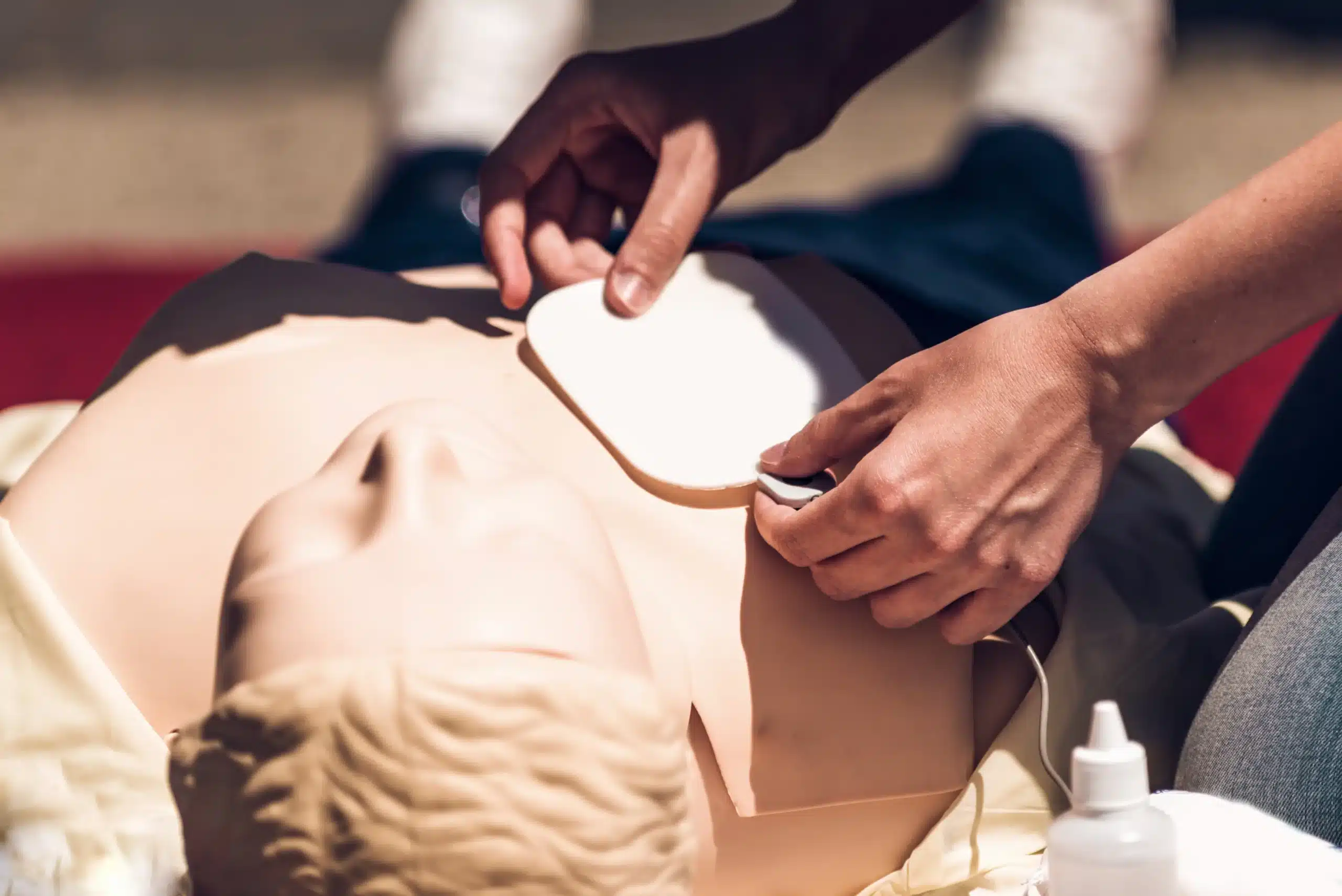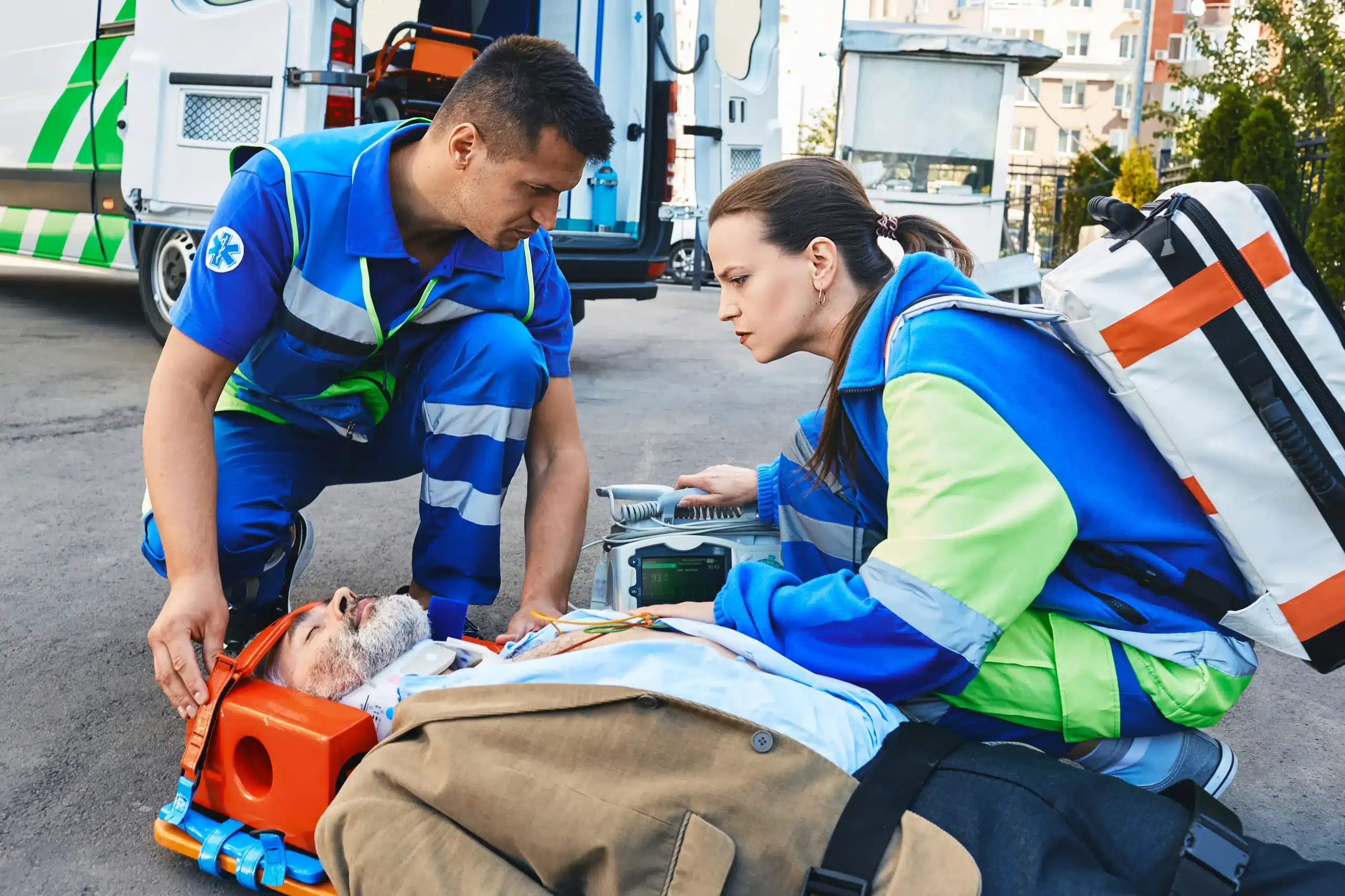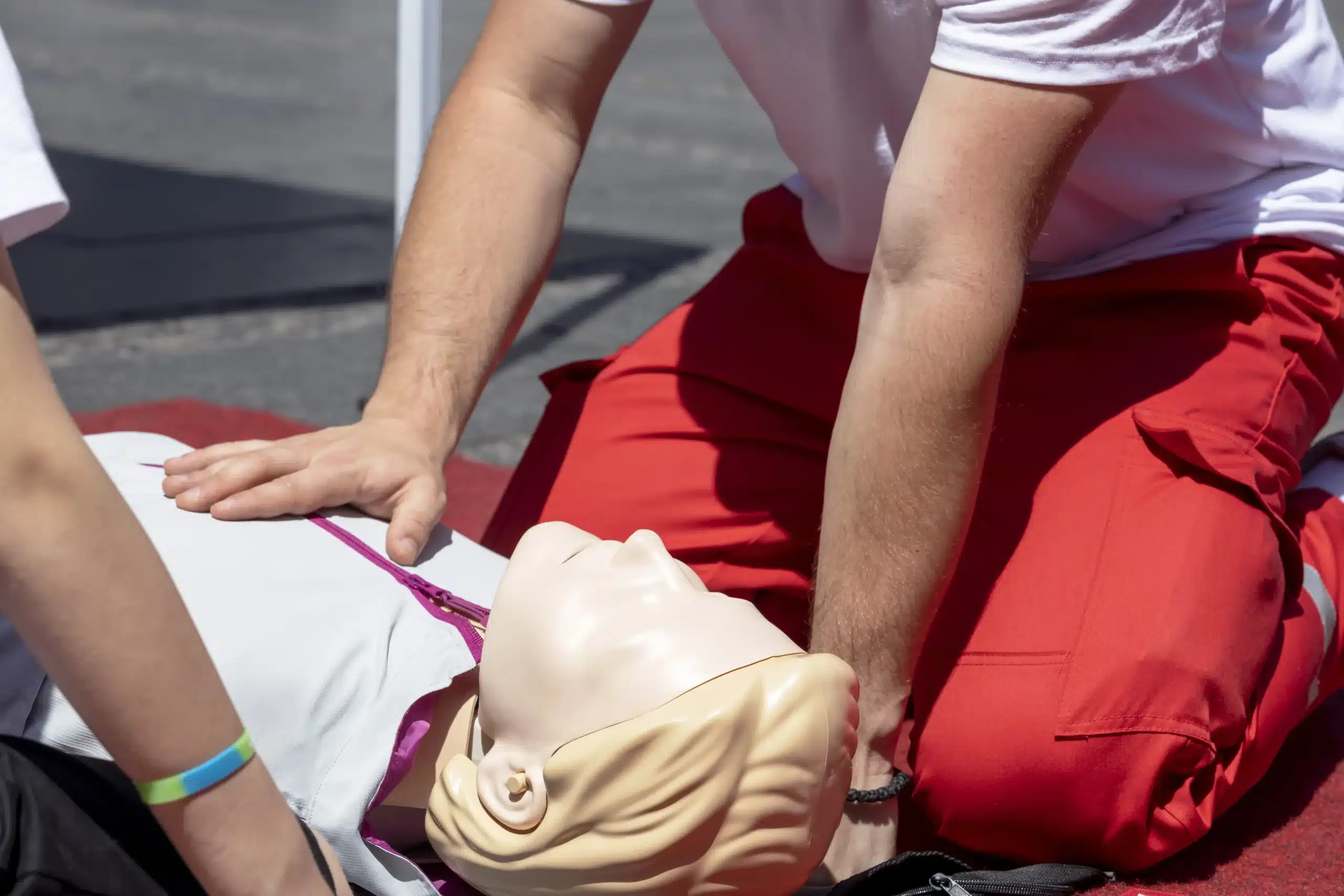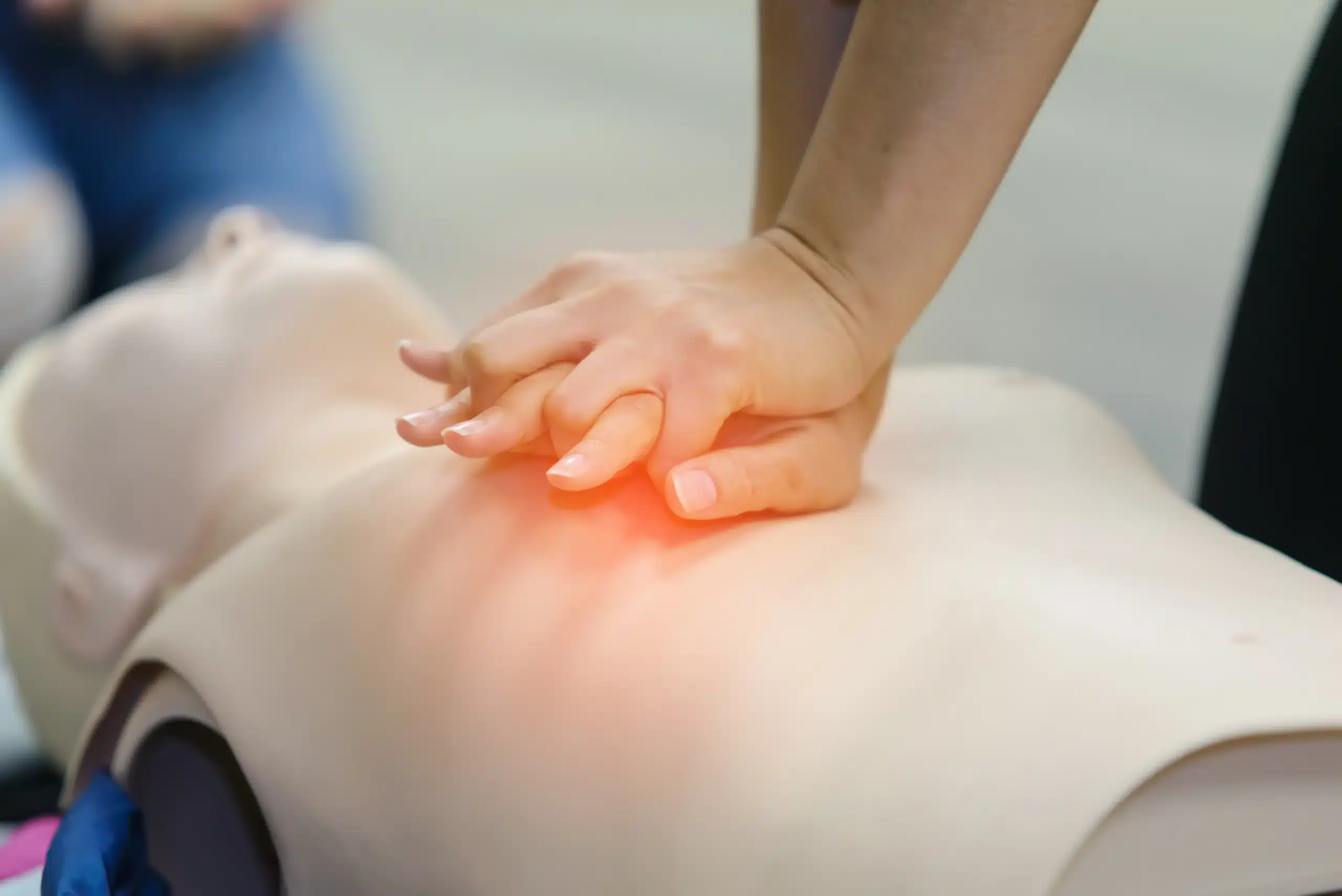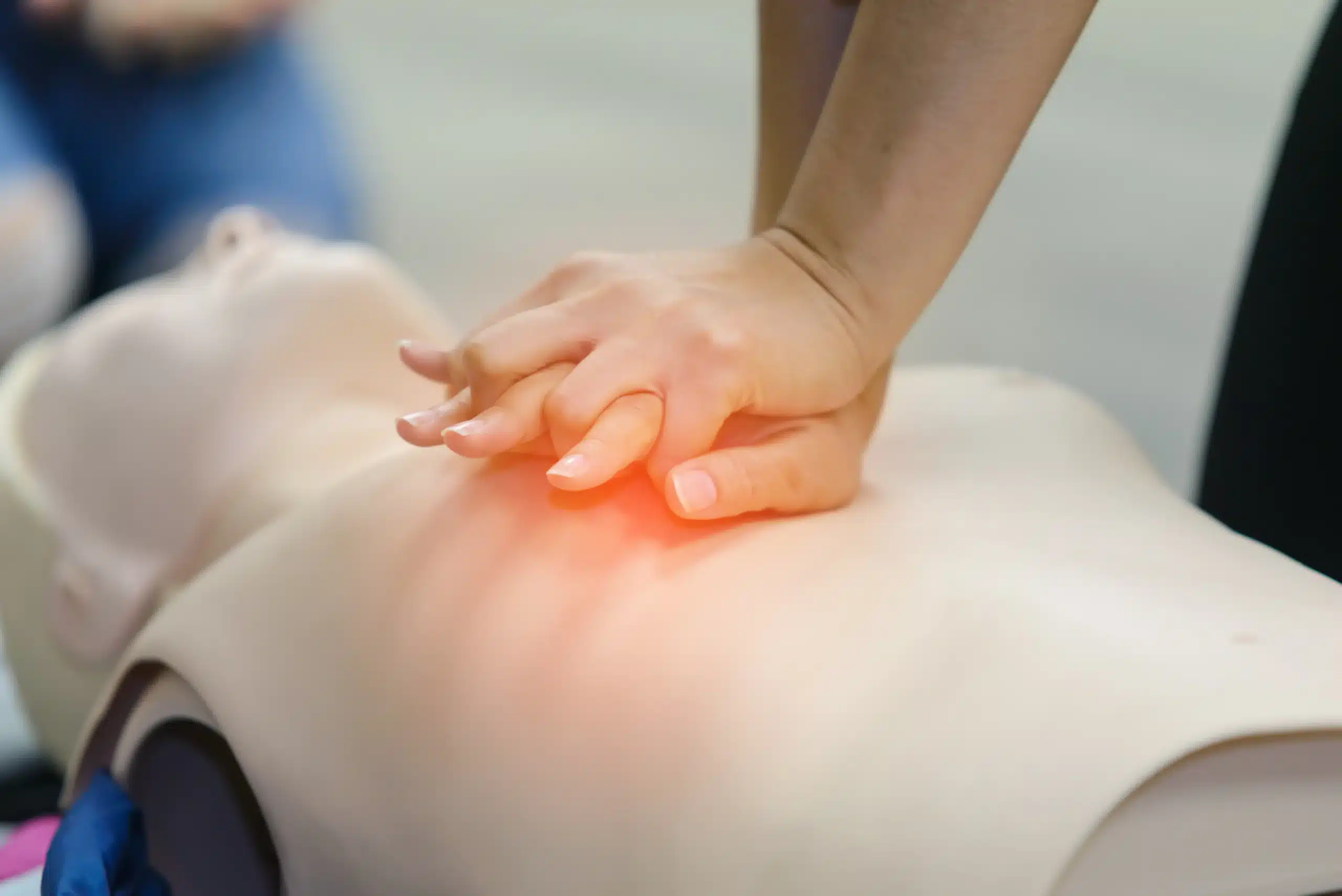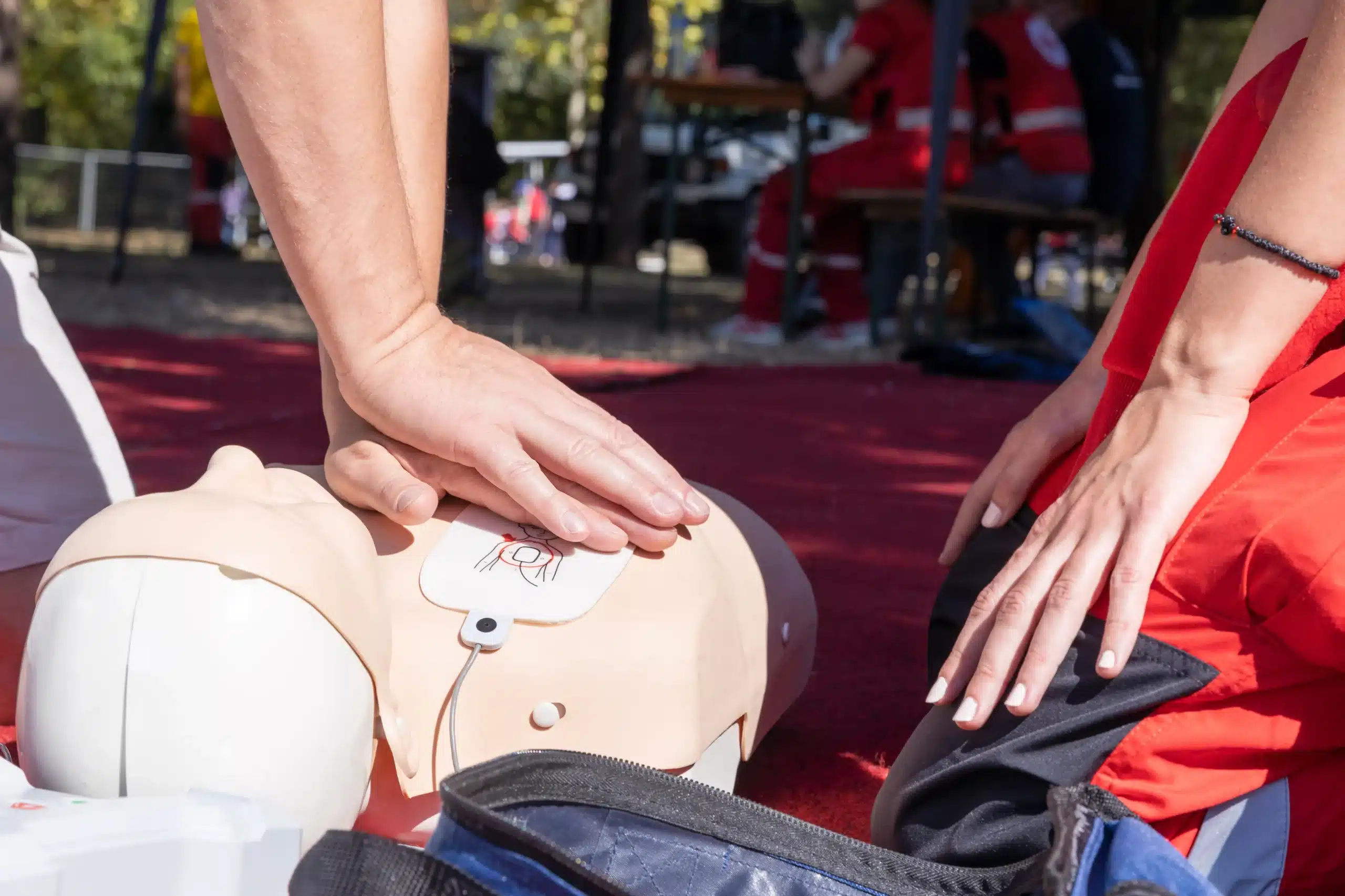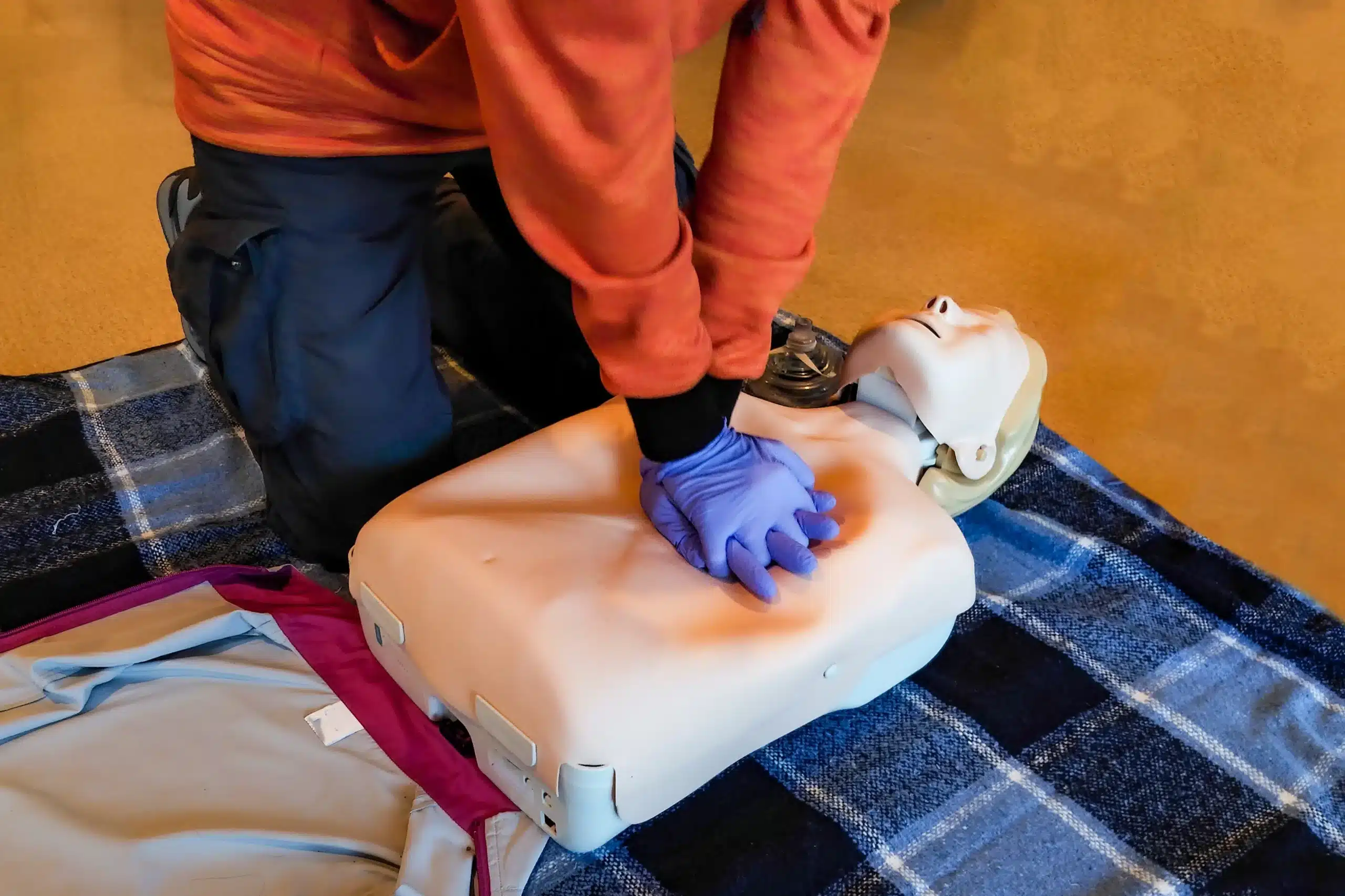Life as a healthcare professional is demanding, and keeping track of certifications can sometimes feel like another item on an already overflowing to-do list. But when it comes to BLS, staying current is crucial. It’s the foundation of emergency care, and your ability to respond effectively can make all the difference. If your BLS certification is expiring soon and you’re searching for “BLS recertification near me,” this guide is here to help. We’ll simplify the recertification process, explain the different options available, and provide you with the resources you need to renew your skills and maintain your confidence in emergency situations.
Key Takeaways
- Regular BLS recertification is crucial: Staying up-to-date with the latest guidelines and techniques ensures you’re prepared to provide high-quality care in emergencies. It also fulfills workplace requirements and boosts your confidence.
- Choose a course format that fits your lifestyle: Whether you opt for in-person, online, or hybrid learning, consider your schedule, learning preferences, and the level of hands-on practice you need.
- Prepare for a smooth recertification: Reviewing key concepts, practicing your skills, and understanding the process beforehand will make your renewal efficient and successful. Take advantage of available resources to refresh your knowledge and build confidence.
What is BLS Recertification?
BLS Recertification is a refresher course for healthcare providers who need to renew their Basic Life Support (BLS) certification. It’s a crucial step in maintaining your skills and ensuring you’re prepared to respond effectively in emergencies. Think of it as a tune-up for your lifesaving abilities. At Safety Training Seminars, we offer BLS recertification courses designed to fit your schedule and learning style.
What is BLS & Why is it Important?
Basic Life Support (BLS) equips individuals with the essential skills to respond to life-threatening emergencies. These skills include CPR, using an Automated External Defibrillator (AED), and providing basic airway management. BLS certification is often a requirement for healthcare professionals and demonstrates a commitment to patient safety. It empowers you to provide immediate care during critical moments, potentially saving lives. Learn more about our comprehensive BLS courses and how they can benefit your career.
Why Stay Current with BLS?
Medical best practices and guidelines are constantly evolving. BLS recertification ensures your knowledge and techniques align with the latest recommendations from organizations like the American Heart Association. Regularly refreshing your skills helps prevent skill decay and reinforces best practices, giving you the confidence to act quickly and efficiently when every second counts. Maintaining current BLS certification not only meets employment requirements but also boosts your confidence in providing high-quality care. Plus, knowing you’re prepared for emergencies provides invaluable peace of mind. Explore our group discounts for cost-effective recertification options.
Top BLS Recertification Providers Near You
Finding the right BLS recertification provider is key to a smooth and valuable learning experience. Here are some of the top organizations offering BLS recertification:
American Heart Association
The American Heart Association (AHA) is a leading authority in CPR and emergency cardiovascular care. They offer several ways to renew your BLS certification, including online courses and in-person classes. AHA courses are known for their comprehensive approach, ensuring healthcare providers stay up-to-date with the latest guidelines and techniques. For those seeking the gold standard in BLS training and recertification, the AHA is an excellent choice. They also offer other advanced certifications like ACLS and PALS. You can find more information about our AHA-compliant ACLS course here.
American Red Cross
The American Red Cross is another well-respected provider of BLS recertification. They offer a streamlined recertification process, making it easy to maintain your credentials. Red Cross CPR training is widely recognized and often a preferred choice for workplace safety. Their focus is on equipping people with the skills and confidence to respond effectively in emergencies. You can explore their CPR class options here.
National CPR Foundation
The National CPR Foundation provides BLS recertification courses designed for healthcare professionals. Their training emphasizes a comprehensive understanding of various medical emergencies, preparing individuals to act as solo or team rescuers. The National CPR Foundation stresses the importance of staying current with BLS practices to provide the best possible care.
ProTrainings
ProTrainings offers a variety of online BLS recertification courses, allowing for flexible learning at your own pace. Their focus is on providing up-to-date information and techniques, ensuring healthcare professionals are well-prepared for emergencies. The online format is particularly convenient for those with busy schedules.
Safety Training Seminars
Safety Training Seminars, much like Palo Alto CPR Classes, offers BLS recertification courses tailored to the needs of healthcare providers. Our aim is to equip professionals with the essential skills and knowledge to respond effectively in emergency situations. At Safety Training Seminars, we emphasize high-quality training and convenient scheduling. We offer a low price guarantee and discounts for group classes. For convenient skills verification and renewal, we also offer RQI classes.
Choose the Right BLS Recertification Format
Finding the right BLS recertification format depends on your learning style, schedule, and budget. Let’s break down the pros and cons of in-person, online, and hybrid options to help you make the best decision.
In-Person Courses: Pros & Cons
In-person BLS recertification courses offer a structured learning environment with face-to-face interaction with an instructor and other students. This format excels at providing hands-on practice and immediate feedback, which can be invaluable for mastering essential skills. You can ask questions in real-time and benefit from the shared experience of the group. The Red Cross offers both online and in-person courses, allowing you to choose the format that best suits your needs. However, in-person classes require a greater time commitment, as you’ll need to travel to a specific location and adhere to a fixed schedule. This can be challenging for busy professionals or those with limited access to transportation.
Online Options: Flexibility & Limitations
Online BLS recertification courses offer unparalleled flexibility. You can complete the training modules at your own pace, anytime, anywhere. This format is perfect for those juggling multiple commitments or who prefer self-directed learning. ACLS Medical Training provides a fully online recertification course, allowing you to complete modules and the certification exam from the comfort of your home. The potential downside is that online courses may not offer the same level of hands-on practice as in-person training. While some programs incorporate videos and simulations, they may not fully replicate the experience of working with physical mannequins and receiving personalized feedback.
Hybrid Models: Combining the Best of Both
Hybrid BLS recertification models offer a compelling blend of online learning and in-person skills assessment. You can enjoy the flexibility of completing the coursework online at your convenience, then attend a shorter, in-person session to demonstrate your skills and receive instructor feedback. SureFire CPR explains this blended approach, which allows students to complete the coursework online and then schedule a brief in-person skills check. This approach combines the best of both worlds, offering convenience without sacrificing the essential hands-on component of BLS training. It’s a great option for those seeking a flexible learning experience while still valuing the benefits of direct interaction with an instructor.
BLS Recertification Process: A Step-by-Step Guide
Renewing your BLS certification is straightforward. This guide breaks down the process into manageable steps. Whether you’re a healthcare provider, a teacher, or anyone needing BLS recertification, we’ll help you get ready.
Prerequisites & Eligibility
Before signing up for a BLS recertification course, make sure you meet the requirements. You’ll typically need a current BLS provider card—or one that’s recently expired (within 30 days)—from a recognized organization like the American Heart Association (AHA) or the American Red Cross. Some providers may accept certifications from other organizations, so check with your chosen training center. For example, to renew through the American Red Cross, your existing certification must also be from the Red Cross. The AHA allows renewals up to 30 days after your certification expires.
Course Content & Duration
BLS recertification courses cover core life-saving skills. Expect a refresher on essential topics such as high-quality CPR for adults, children, and infants, the AHA Chain of Survival, and using an automated external defibrillator (AED). You’ll also learn about teamwork during resuscitation and how to relieve choking. Course duration can range from 2.5 to 4.5 hours, depending on the training provider and format (online, in-person, or blended learning). Many courses incorporate the latest guidelines from the AHA, ensuring you’re up-to-date on the most effective practices.
Skills Assessment & Certification
The final step involves demonstrating your skills and knowledge. You’ll participate in a skills assessment where you perform CPR and other life-saving techniques in a simulated environment. After successfully completing the skills check and a written exam, you’ll receive your updated BLS provider card, valid for two years. You can usually take a renewal class up to 60 days after your certification expires, but renew before the expiration date to avoid a lapse in your credentials. Staying current with your BLS certification ensures you’re prepared to respond confidently in emergencies.
BLS Recertification Costs
Getting recertified in BLS is an investment in your skills and career. Understanding the costs involved helps you budget effectively and find the best value. Let’s break down the typical expenses associated with BLS recertification.
Average Price Ranges
BLS recertification courses typically range from $70 to $120, depending on the training provider, location, and course format. For example, providers like Berkeley CPR Classes offer a BLS course for around $120, which includes online coursework, the skills test, and your certification card. In-person classes might be slightly more expensive than online or blended learning options due to facility and instructor costs. Always confirm pricing with your chosen provider before registering. At Safety Training Seminars, our BLS course offers a competitive rate and includes everything you need to get recertified. We also have a low price guarantee to ensure you’re getting the best value.
Discounts & Package Deals
Many training centers offer discounts for group registrations, students, military personnel, and returning customers. Some providers, like LBW Training Center, offer a military discount. Bundling BLS recertification with other courses, such as ACLS and PALS, can also lead to significant savings. Providers like ACLS Medical Training and NHCPS offer recertification bundles that cover all your certification needs at a discounted price. Check with your chosen provider to see if they offer any special promotions or package deals that fit your needs and budget. Safety Training Seminars also offers group discounts to make training more accessible.
Valuable Features
When comparing BLS recertification courses, consider the value you’re getting beyond the certification. Some courses include online resources, practice materials, and access to a community of healthcare professionals. Look for courses that offer high-quality training materials, engaging learning experiences, and convenient scheduling options. Features like online simulations, scenario-based learning, and interactive quizzes, as offered by Premiere Education, can enhance your learning. Also, consider the accessibility of the course materials. Many providers, including ACLS Medical Training, offer online BLS recertification courses with all study materials included, making it easier to fit recertification into your busy schedule. At Safety Training Seminars, we prioritize providing comprehensive training that equips you with the confidence and skills to respond effectively in emergencies. Our instructors use the RQI program for the American Heart Association certifications, ensuring you receive high-quality, up-to-date training.
Find & Register for BLS Recertification
Now that you understand the importance of BLS recertification, let’s explore how to find a course and register. These next steps will guide you through the process, ensuring a smooth and efficient renewal.
Find Nearby Courses Online
Finding a convenient BLS recertification course is easier than ever. The American Red Cross website offers a search tool to locate classes near you, including both in-person and online options. Simply enter your zip code or city to see available courses and schedules. This streamlined approach helps you quickly identify a course that fits your location and availability. You can also explore options directly through the American Heart Association or check with local hospitals and training centers. For those in the Palo Alto area, Safety Training Seminars offers convenient options for BLS certification and recertification.
Enrollment Guide
Once you’ve found a course that works for you, enrolling is straightforward. Most providers offer online registration through their websites. You’ll typically select your desired course date and time, provide your contact information, and submit your payment. Some providers may require you to create an account to manage your certifications and training history. Be sure to review the specific enrollment requirements for your chosen course to ensure a seamless registration.
What to Bring
While the specific requirements may vary depending on the provider and course format, there are a few essential items to bring to your BLS recertification course. Always have your current BLS provider card to verify your existing certification. If your course involves hands-on skills practice, you likely won’t need to bring anything else. For courses that include a written exam, you might want to bring a pen or pencil, though most providers will have these available. It’s always a good idea to double-check with your chosen provider for any specific requirements. For example, if you’re taking a blended learning course with online modules, you may need access to a computer or tablet to complete the online portion before attending the in-person skills session.
Prepare for Your BLS Recertification
Getting ready for your BLS recertification doesn’t have to be stressful. With a little preparation, you can walk into the exam room feeling confident and ready to renew your skills. Here’s how to make the recertification process smooth and successful.
Review & Resources
Before your BLS recertification course, take some time to review the core concepts. This includes essential life-saving techniques like CPR for adults, children, and infants, how to use an AED, and the latest guidelines from the American Heart Association. The American Heart Association website offers helpful resources and refresher materials. Other providers, like the American Red Cross, also offer BLS renewal courses. AHA BLS certification is typically valid for two years. While you can sometimes renew up to 30 days after expiration, it’s always best to plan ahead.
Practice BLS Techniques
Hands-on practice is key to mastering BLS skills. Don’t just read about the techniques—physically practice them. If you have a CPR manikin, use it to rehearse chest compressions and rescue breaths. Practice with friends or family members to simulate real-life scenarios. This will help build your muscle memory and improve your response time in actual emergencies. Your recertification course will likely cover key changes from the 2015 AHA guidelines, including the Chain of Survival, so familiarize yourself with those updates beforehand. Medicus Training offers excellent tips for mastering essential BLS skills.
Recertification Success Tips
A few simple strategies can make your recertification process even smoother. Renew your BLS certification before it expires to avoid retaking the entire course, saving you time and money. Check the specific requirements of your certifying organization, as they may have particular guidelines. If you have a busy schedule, consider the convenience of online renewal courses. Heart Start CPR offers helpful advice on BLS renewal options. By following these tips, you’ll be well-prepared to renew your BLS certification and continue providing high-quality care.
Maintain Your BLS Certification
Once you’ve earned your BLS certification, staying current is key. This not only ensures you’re prepared to respond effectively in an emergency, but also demonstrates your commitment to providing high-quality care. Here’s how to maintain your BLS certification and stay at the top of your game:
Track Expiration Dates
BLS certification is typically valid for two years. Mark your calendar or set a reminder so you know when your certification expires. Renewal is often possible within a short grace period (sometimes up to 30 days) after the expiration date, but it’s always best to recertify before it lapses. This avoids any gaps in your certification and ensures you’re always ready to respond. Resources like Save A Life CPR offer helpful information on BLS renewal.
Continuing Education
Staying up-to-date with the latest advancements in BLS is crucial for providing effective care. Many BLS recertification courses offer continuing education (CE) credits, which can contribute to your professional development and demonstrate your commitment to ongoing learning. Reviewers at Premiere Education often highlight the CE credits available with their courses. Check with your certifying organization or employer to see if CE credits are required or recommended for your profession.
Stay Updated on Guidelines
Emergency care guidelines evolve as research advances and best practices are refined. Staying informed about these updates is essential for delivering the most effective BLS. The American Heart Association regularly publishes updated guidelines and resources for healthcare providers. Make it a habit to review these resources periodically to ensure your skills and knowledge align with current recommendations. This proactive approach will help you confidently handle any emergency situation.
Related Articles
- BLS Renewal in Palo Alto: Your Easy Guide – Palo Alto CPR Classes
- BLS Renewal in Redwood City: Your Simple Guide – Palo Alto CPR Classes
- BLS Training in Palo Alto: Your Comprehensive Guide – Palo Alto CPR Classes
- BLS Certification in Palo Alto: Your Comprehensive Guide – Palo Alto CPR Classes
- BLS Classes in Palo Alto: Your Complete Guide – Palo Alto CPR Classes
Frequently Asked Questions
How often do I need to renew my BLS certification? BLS certification is typically valid for two years. It’s best to renew before your certification expires to avoid any gaps in your credentials.
What’s the difference between BLS certification and recertification? Initial BLS certification teaches you the fundamental lifesaving skills for the first time. Recertification is a refresher course for those who already hold a BLS certification and need to renew it. It covers the same core content but in a more concise format, focusing on reinforcing existing skills and updating knowledge based on the latest guidelines.
What if my BLS certification has already expired? You can usually still renew your certification within a grace period, often up to 30 days after the expiration date. However, it’s always recommended to renew before your certification expires to avoid any lapse in your credentials. If your certification has been expired for longer than the allowed grace period, you may need to retake the full BLS certification course.
Can I renew my BLS certification online? Yes, many providers offer online BLS recertification courses, providing a flexible way to renew your skills. These courses typically involve online modules and videos, followed by an in-person skills assessment to demonstrate your proficiency.
Where can I find BLS recertification courses near me? Several organizations offer BLS recertification, including the American Heart Association, the American Red Cross, and Safety Training Seminars. You can often find courses near you by searching online or checking with local hospitals and training centers. Safety Training Seminars offers convenient options for those in and around Palo Alto, Redwood City, and Menlo Park.
